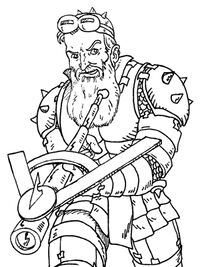Template:Are You Sure/October 16: Difference between revisions
No edit summary |
No edit summary |
||
| Line 1: | Line 1: | ||
[[File:Galileo Galilei.jpg|link=Galileo Galilei, Crime Fighter|200px|thumb|1609: Physicist, inventor, and crime-fighter [[Galileo Galilei]] discovers secret [[math crime]] gang in the Vatican, vows to "see them all swing from the Earthly ends of ropes, in a mortal demonstration of the immortal Pendulum."]] | [[File:Galileo Galilei.jpg|link=Galileo Galilei, Crime Fighter|200px|thumb|1609: Physicist, inventor, and crime-fighter [[Galileo Galilei]] discovers secret [[math crime]] gang in the Vatican, vows to "see them all swing from the Earthly ends of ropes, in a mortal demonstration of the immortal Pendulum."]] | ||
• ... that rabbi, physician, and mathematician '''[[Joseph Solomon Delmedigo (nonfiction)|Joseph Solomon Delmedigo]]''' (16 June 1591 – 16 October 1655) followed lectures by [[Galileo Galilei (nonfiction)|Galileo Galilei]] during the academic year 1609–1610, and was accorded the rare privilege of using Galileo's own telescope; and that, in the following years, Delmedigo often refers to Galilei as "rabbi Galileo," an ambiguous phrase which may simply mean "my master, Galileo."? | |||
• ... that physicist '''[[Gustav Kirchhoff (nonfiction)|Gustav Kirchhoff]]''' (12 March 1824 – 17 October 1887) contributed to the fundamental understanding of electrical circuits, spectroscopy, and the emission of black-body radiation by heated objects; that Kirchhoff coined the term "black body" radiation in 1862; and that two different sets of concepts (one in circuit theory, and one in spectroscopy) are named "Kirchhoff's laws" after him? | • ... that physicist '''[[Gustav Kirchhoff (nonfiction)|Gustav Kirchhoff]]''' (12 March 1824 – 17 October 1887) contributed to the fundamental understanding of electrical circuits, spectroscopy, and the emission of black-body radiation by heated objects; that Kirchhoff coined the term "black body" radiation in 1862; and that two different sets of concepts (one in circuit theory, and one in spectroscopy) are named "Kirchhoff's laws" after him? | ||
• ... that physicist '''[[Nicholas Metropolis (nonfiction)|Nicholas Metropolis]]''' (11 June 1915 – 17 October 17) led a groups of researchers, including [[John von Neumann (nonfiction)|John von Neumann]] and [[Stanislaw Ulam (nonfiction)|Stanislaw Ulam]], who developed the Monte Carlo method, a statistical approach to deterministic many-body problems? | • ... that physicist '''[[Nicholas Metropolis (nonfiction)|Nicholas Metropolis]]''' (11 June 1915 – 17 October 17) led a groups of researchers, including [[John von Neumann (nonfiction)|John von Neumann]] and [[Stanislaw Ulam (nonfiction)|Stanislaw Ulam]], who developed the Monte Carlo method, a statistical approach to deterministic many-body problems? | ||
Revision as of 15:30, 15 October 2020

• ... that rabbi, physician, and mathematician Joseph Solomon Delmedigo (16 June 1591 – 16 October 1655) followed lectures by Galileo Galilei during the academic year 1609–1610, and was accorded the rare privilege of using Galileo's own telescope; and that, in the following years, Delmedigo often refers to Galilei as "rabbi Galileo," an ambiguous phrase which may simply mean "my master, Galileo."?
• ... that physicist Gustav Kirchhoff (12 March 1824 – 17 October 1887) contributed to the fundamental understanding of electrical circuits, spectroscopy, and the emission of black-body radiation by heated objects; that Kirchhoff coined the term "black body" radiation in 1862; and that two different sets of concepts (one in circuit theory, and one in spectroscopy) are named "Kirchhoff's laws" after him?
• ... that physicist Nicholas Metropolis (11 June 1915 – 17 October 17) led a groups of researchers, including John von Neumann and Stanislaw Ulam, who developed the Monte Carlo method, a statistical approach to deterministic many-body problems?